What really happens when two electric cars collide
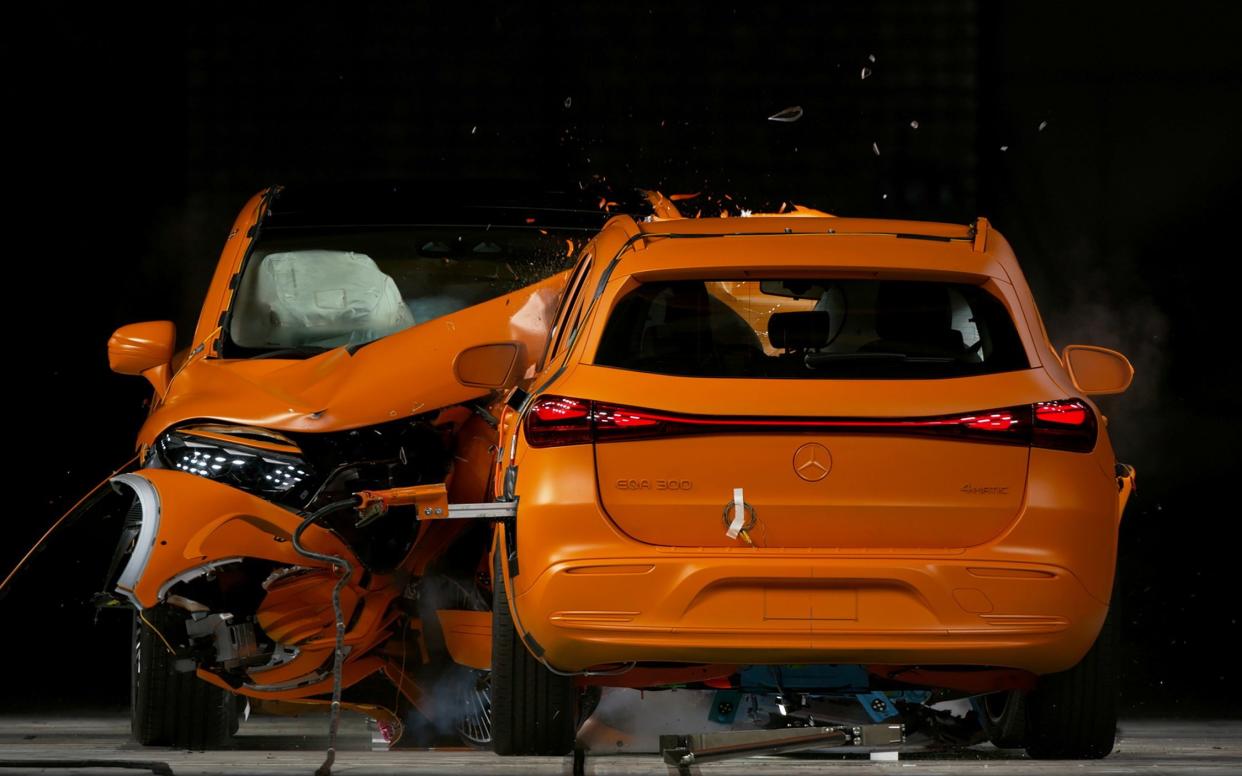
There’s a piece of plastic on my desk as I write this. Cracked and splintered, it’s about an inch long, with flaking matt-orange paint on one side. Up until lunchtime yesterday it was part of a pristine, £150,000 Mercedes-Benz EQS SUV; a 5.125-metre (16ft 10ins) long, 2.8-ton battery-electric luxury car. Or it might equally well have been part of a new, £50,000 Mercedes-Benz EQA, a 4.46-metre long, 2.1-ton battery-electric family SUV. They are painted orange because it has the least amount of reflections for the cameras.
This is the Mercedes-Benz crash test facility, in Sindelfingen near Stuttgart. It’s a 300ft by 300ft roofed facility of uninterrupted concrete with a single roof span and many overhead crane gantries; not everything that rolls in here on its own wheels can roll out again when they’ve finished with it.
With a staff of 150 and three crash-test tracks, they can perform up to five crashes a day.
Debris
Frankly, however, in the aftermath of both cars meeting each other at a closing speed of 70mph with a 50 per cent offset, the ground was so littered with thousands of pieces of debris that it would take even the Air Accidents Investigation Branch months of work to determine which was which. A tyre had been torn clean off its rim, which in turn had been torn clean off the car along with the entire suspension system. The headlamp units of both cars were flung, virtually undamaged, into the far corners of the site. The three-pointed star had been ripped from the front of both cars.
Such was the energy dissipated in the crash, most of the front corners of both cars were utterly destroyed, although the lighter and smaller EQA was the more damaged and flung further from the scene of the impact. A point was marked by twin red lines denoting the position where the two vehicles would meet their ends on a piece of armoured glass, so that the crash could be photographed from underneath.
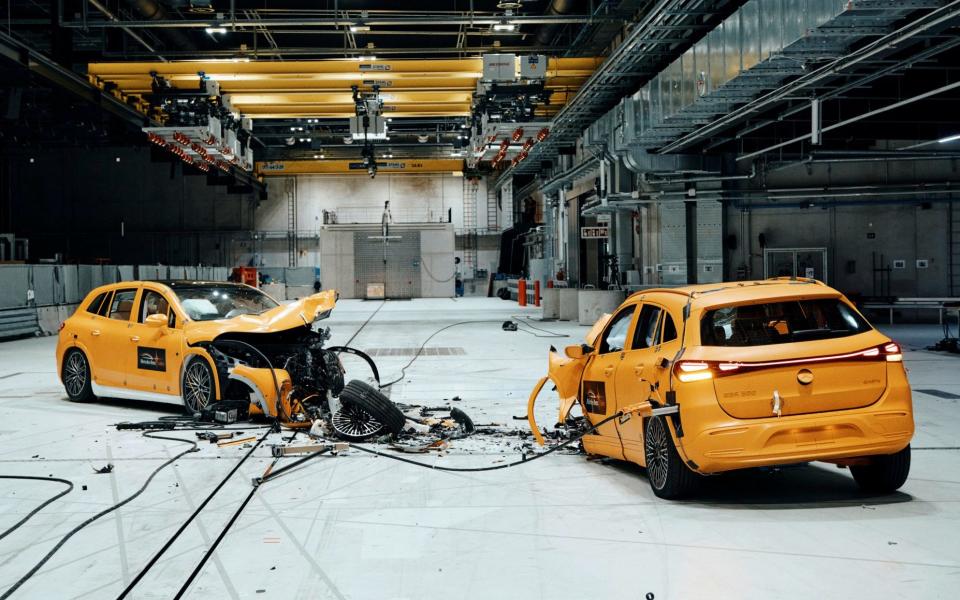
Those cameras can take 1,000 pictures a second, and to enable them to do that, the crash site is illuminated with incredibly bright lights, shining with the intensity of 100,000 lux, brighter than the sunniest day you could imagine.
The two vehicles are 430ft apart and towed into the accident area by a wire rope buried under the floor. Precautions are comprehensive. Stuttgart’s fire service is on hand and will inspect both vehicles after the crash for fire before anyone else is allowed near. There’s a huge fork-lift truck idling in a corner ready to lift the wrecks and dump them into a huge tank of water outside, should the unthinkable happen.
Look at the red lines…
When the test takes place, they advise you to look at the two red lines. If you try to visually follow a vehicle into the crash, you’ll miss it.
“I missed about three crashes before I started looking at the red lines,” says Julia Hinners, head of passive safety engineering.
She also advises ear plugs; this is going to be loud. In physics terms, we’re here to watch the kinetic energy of each vehicle reduced to zero as the energy is dissipated in noise, heat, throwing stuff around and bending things. There’s a nervous energy among the few journalists gathered here.
Another way of putting it is that two vehicles with a combined weight of nearly five tons, each travelling at 35mph, will hit each other. According to professor Paul Dick, Mercedes director of vehicle safety, this sort of offset frontal collision is typical of head-on crashes on non-motorway roads.
“There are 1.3 million road traffic fatalities in the world every year,” says Dick. “It’s the equivalent of 12 large aeroplanes crashing every day. It’s unacceptable.”
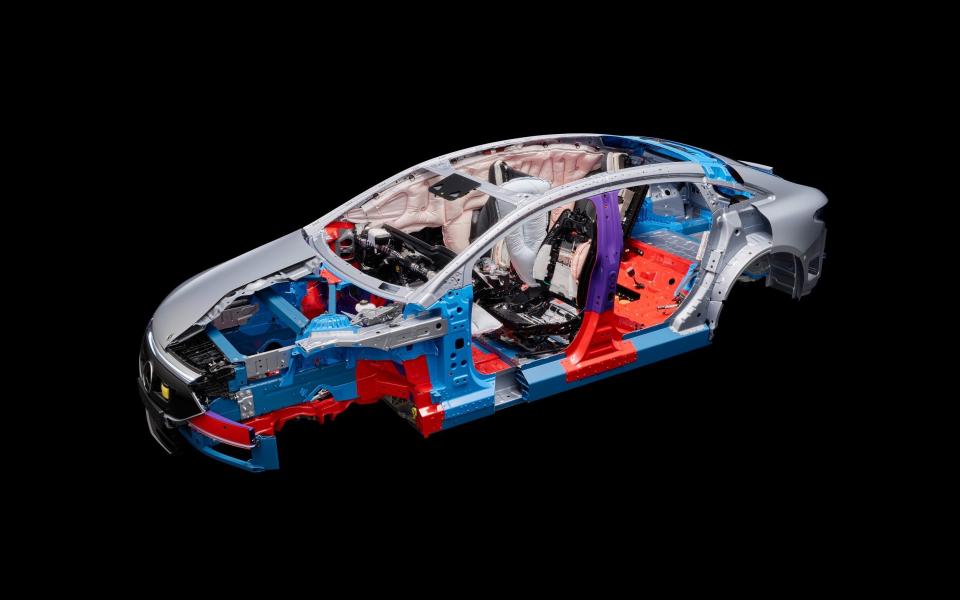
Vision zero
Like Volvo before it, Mercedes-Benz has an aim of having no major injuries or deaths in Mercedes cars by 2050. Mercedes’s safety policy is blind to the drivetrain (and the occupants’ age and gender, hence the crash test dummies in the cars are “female” and “male”), but a battery-electric car gives its own set of challenges in a crash. On the plus side there’s no engine block in the front so chassis engineers can channel the crash forces through the high-strength steel chassis components and ultra-high-strength steel roof beams, which give Mercedes-Benz cars enhanced and more than mandated roll-over protection. And, with more front space for bigger crumple zones, there are sliding joints built into the front of the car to absorb and dissipate the impact before its effects reach the passenger cabin.
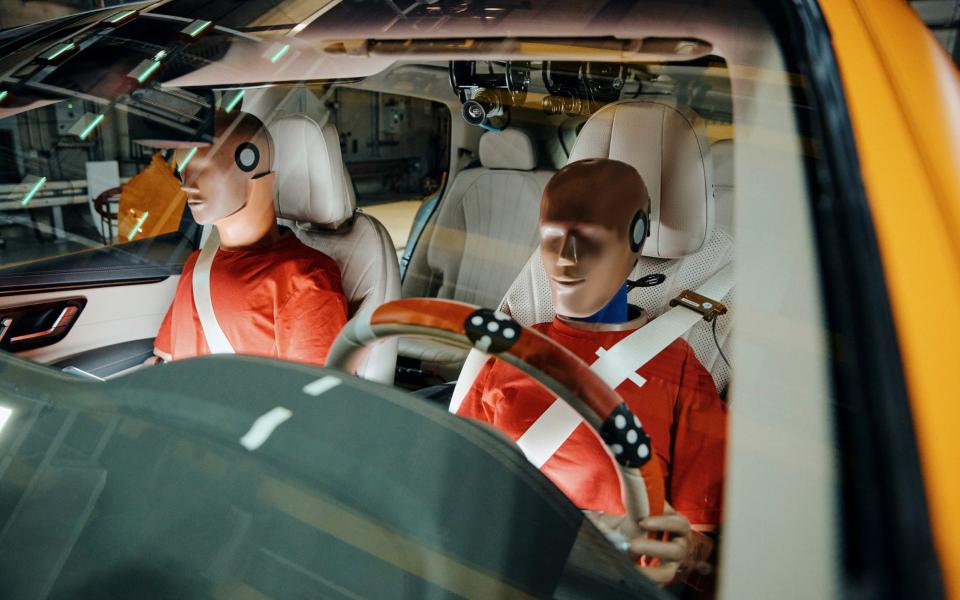
With side, middle, seat, knee, dashboard and rear occupant air bags there’s a sophisticated central “occupant restraint controller”, which is mounted at the centre of gravity and mass between the front seats (which is further back than a combustion-engined car because of the weight distribution). The controller will only trigger the airbags required to save occupants from injury in the first impact; it’s saving the others for secondary impacts that might follow.
On the minus side is the battery pack itself, which is heavy and vulnerable. Mercedes takes the view that the under-floor pack has to be protected in a massive high-strength steel frame, with crumple zones in the deep sill sections. The high-voltage cables are automatically isolated in the event of an impact with a further manual isolator for fire and emergency services so that they can be absolutely sure the electrics are disconnected.
What’s almost impossible to deal with at the moment is the potential for an internal short circuit caused by penetration of the battery, or it just being shaken about in a crash, and the high-temperature fire which can then start within the cells.
The crash
Dick seems strangely confident about the outcome of the crash, especially as they’ve never done one before. “The cars should look like hell, but the occupants will be safe,” he says.
In the silence after the collision, when the dust has literally settled, my ears are ringing and there’s that sour smell of air bag propellant. Despite it being a staged event, the crash is shocking and quite upsetting. Five minutes after impact, the crumple zones are still hot to the touch where they’ve folded up. Yet each passenger compartment is undamaged, the doors open and the battery cells are unbreached.
In the crash, each passenger dummy has been subjected to between 20 and 25 times the force of gravity. Into an unmoving concrete block, you can raise that figure to up to 45g.
The faster the car, the more energy there is to dissipate, and slowing down the impact speed will have more effect than losing weight.
And what about those vulnerable road users such as pedestrians, cyclists or motorcyclists? Dick doesn’t try to minimise the risks, but he explains that Mercedes is trying to mitigate the effect of such collisions with pyrotechnic, soft-deforming bonnets, autonomous braking and infra-red radar and camera road-scanning systems. If the vehicle knows you are there, it can do something about you.
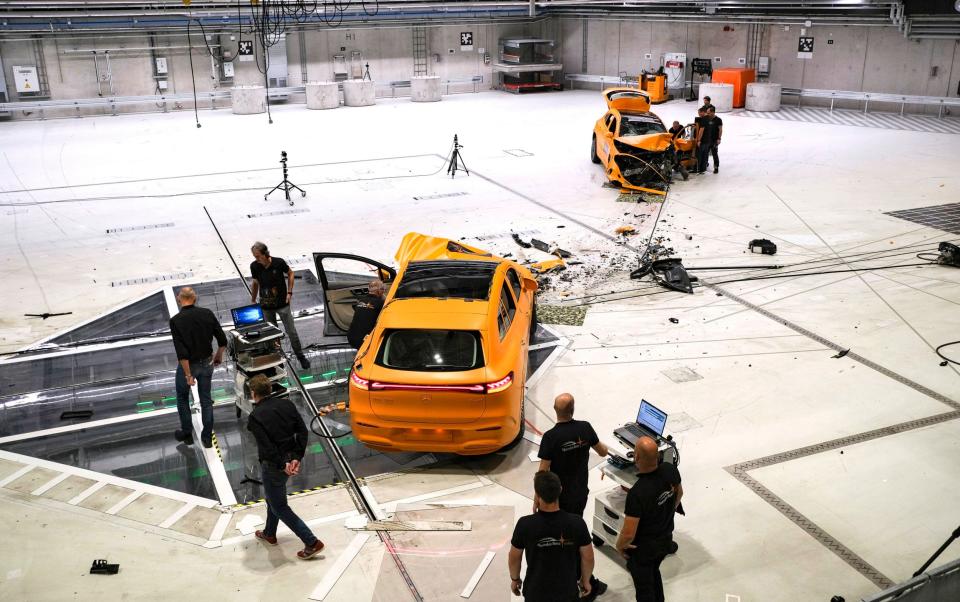
Deceleration and unpredictability
The human frame can survive some incredible forces acting on it. In 1977, during practice for the British Grand Prix at Silverstone, the brave racing driver David Purley (a former paratrooper, who won the George Medal for his attempt to save the life of fellow grand prix driver Roger Williamson) crashed into the barriers when his throttle stuck wide open. The deceleration from 108mph to zero in just 26 inches was estimated at 179.8g and for years was recorded in The Guinness Book Of Records as the highest G-force survived by a human being.
The thing is, though, outside of a Mercedes crash safety laboratory, you can’t always predict what’s going to happen or its consequences. There’s road furniture, other vehicles, long drops and vulnerable road users – and even if you are in a safe, modern vehicle, there can be unsecured stuff and possibly people flying around in the cabin.
There’s a danger that drivers in super-safe cars have a risk-compensation mindset, driving faster and more perilously as a consequence, which will come as no compensation to the rest of us.
And, if you don’t want your car and what it hits to disappear in a blizzard of tiny parts like the one in front of me, perhaps it might be a good plan to drive a bit more safely in future…

